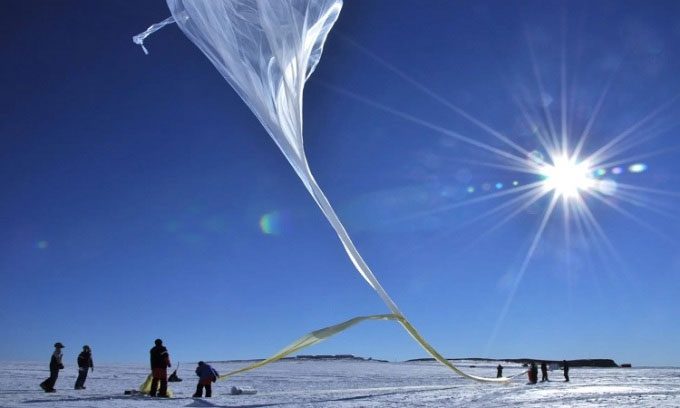In the context of an increasing number of unidentified objects being shot down by the U.S. Air Force, experts warn that countless balloons could become potential targets.
The U.S. will need more missiles if it wants to use fighter jets to shoot down every balloon that sets off warning signals in U.S. airspace. At any given time, there are thousands of balloons above the Earth, including many used in the U.S. by government agencies, military forces, independent researchers, and amateur enthusiasts, according to Paul Fetkowitz, president of Kaymont Consolidated Industries, a large manufacturer of high-altitude balloons in Melbourne, Florida. Fetkowitz and other experts suggest that this balloon fleet could explain the origins of some of the slow-moving objects at high altitudes that have been shot down in the U.S. and Canada in recent days, as referred to by John Kirby, spokesperson for the National Security Council.

NASA scientists prepare to launch one of 20 balloons during a scientific mission in 2013. (Photo: NASA)
Since February 4, when the U.S. shot down a large Chinese spy balloon flying at an altitude of about 19.3 km across North America, federal authorities have been working to enhance radar and atmospheric tracking equipment to monitor national airspace more thoroughly. Balloon experts indicate that the new upgrades could create a series of false alarms.
On February 10, a fighter jet in Alaskan waters shot down a large object the size of a small vehicle, which a Pentagon official indicated was likely a balloon. The next day, a U.S. F-22 attacked a cylindrical object over Yukon in Canada, which was smaller than the Chinese reconnaissance device. On February 12, an octagonal structure with multiple hanging cables and no accompanying equipment was shot down over Lake Huron. This object first appeared in Montana a few days earlier. According to Kirby, all three objects posed a threat to civil aviation, but they did not transmit communication signals.
Fetkowitz is concerned that government officials in Washington may not recognize how many high-altitude balloons are flying in the U.S. skies. Each year, about 60,000 large high-altitude balloons are launched by the National Weather Service. They ascend to the stratosphere, a layer of the atmosphere extending up to 48 km high. The balloons used by the Weather Service are designed to fly at altitudes of 32 km, exceeding the heights of the four objects detected in the past ten days, according to the New York Times.
Fetkowitz emphasized that Alaska, where the U.S. fighter jet shot down the unidentified flying object on February 10, has more weather balloon launch sites than any other state. The Weather Service balloons collect data to help commercial jets avoid turbulence and assist experts in predicting severe storms.
Additionally, for many years, NASA, which is conducting a program from Palestine, Texas, has launched over 1,700 large balloons in scientific missions lasting several months. These balloons can reach altitudes of up to 34 km and carry equipment weighing up to 4 tons, equivalent to three small cars. Some balloons are equipped with sensors to explore the condition of the ozone layer, which protects life on Earth from the Sun’s ultraviolet rays. Industry experts reveal that DARPA (Defense Advanced Research Projects Agency) is testing a new high-durability balloon class for use on the battlefield, serving as a communication relay. However, Randolph Atkins, a DARPA spokesperson, denied this information.
It’s not just the U.S. that regularly uses balloons. Many countries within the 193 member states and territories of the World Meteorological Organization in Geneva frequently launch large numbers of stratospheric balloons, some designed for long-term missions aimed at collecting global data.
According to Fetkowitz, weather balloons launched by the National Weather Service are designed to explode at their highest point and break into small fragments that do not pose a danger to wildlife below. However, some balloons deflate and never ascend high enough to explode, allowing them to drift with the wind. “A balloon released in Denver can drift all the way to New Jersey,” Fetkowitz said.
Users of balloons for scientific, commercial, and military purposes have faced criticism in the past. For years, environmental activists have argued that balloons that explode fall back to Earth and threaten natural landscapes, especially marine life. Marilynn Mendell, a public relations consultant, once found balloon debris on the beach in 2016.
However, not all balloons are used for scientific or commercial purposes. For example, a customer once used balloons from Fetkowitz’s company to launch equipment playing the album “The Dark Side of the Moon” by Pink Floyd. Another balloon carried a toy shaped like a train engine belonging to a child to the stratosphere.


















































